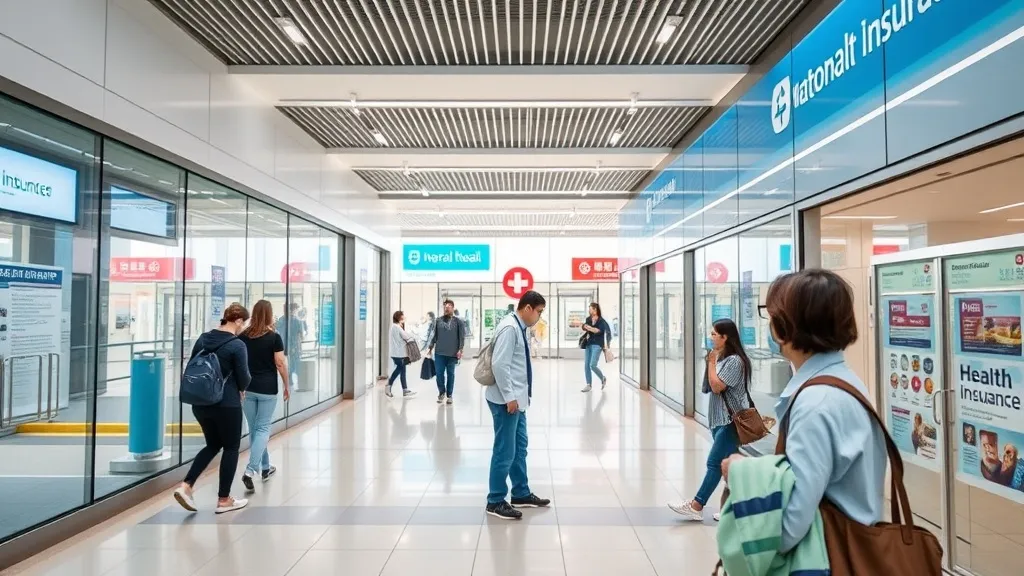Korea National Insurance for Foreigners
Finding reliable health coverage when you move abroad can feel like navigating a maze. You’re not alone in that frustration. The truth is, South Korea’s system may seem complex, but with the right guidance, it’s surprisingly straightforward. In this guide to national health insurance Korea for foreigners, you’ll discover how to enroll, what benefits you get, and tips to save on medical bills. We’ll demystify eligibility rules, walking you through step-by-step registration, coverage details, and cost breakdowns. By the end, you’ll know exactly how to protect your health—and your wallet—while living in Korea. Ready?
(Hint: Over 97% of residents are covered by NHIS [Wikipedia].)
Table of Contents
What Is NHIS and Why It Matters?
You might be wondering, “What exactly is the National Health Insurance Service?” Here’s the thing: NHIS is South Korea’s universal healthcare system, funded by mandatory premiums. It’s your ticket to affordable doctor visits, hospital stays, prescriptions, and preventive care.
Let me explain why this matters for you. Without NHIS, you’d be paying 100% of medical fees—sometimes sky-high. With coverage, co-payments typically range from 20% to 30% for most services. That adds up to big savings over time.
“For foreigners residing in South Korea beyond six months, enrolling in NHIS isn’t just recommended—it’s required.”
—Healthcare Analyst, Pacific Prime
Actionable takeaway: Check your visa validity. If your stay exceeds six months, start NHIS enrollment ASAP.
Who Needs National Health Insurance in Korea?
Starting with the basics, let’s talk eligibility. Who exactly falls under the NHIS umbrella?
Context: South Korea mandates NHIS for:
- Employees on work visas (E-series).
- Self-employed residents with ARC validity over six months.
- Students enrolled at Korean universities for more than six months.
Here’s a real example: Anna, an E-2 visa holder teaching English in Seoul, was automatically enrolled by her school in month two. Premiums were deducted from her paycheck, cutting her medical costs by half.
Actionable takeaway: Verify your visa category with HR or your university’s international office.
How to Enroll in NHIS as a Foreigner
Ready for the step-by-step? Enrollment is sequential but simple if you follow along.
- Visit your local NHIS office with ARC and passport.
- Fill out the NHIS application form (available in English).
- Submit proof of income or employment contract.
- Receive your NHIS card within two weeks.
- Set up monthly premium payments via bank auto-debit.
Example: Michael, a self-employed graphic designer, visited his district NHIS branch. He paid a provisional premium based on last year’s declared income. Two months later, his final premium was adjusted.
Expert Data: In 2025, the average monthly premium for a single foreign worker was approximately ₩70,000 (USD 55) Ministry of Health and Welfare.
Actionable takeaway: Enroll within 14 days of your six-month anniversary to avoid late fees.
Coverage and Costs: What’s Included?
Let’s break down what you get for your premium.
NHIS covers:
- Inpatient care (70–80% of cost).
- Outpatient visits (60–70% of cost).
- Prescription drugs (50% co-pay roughly).
- Preventive screenings (often free).
Interestingly enough, some high-tech treatments like advanced oncology or rare procedures may require private supplemental plans.
Case Study: Lina, an expat with a chronic condition, saved over $5,000 in treatment costs last year thanks to NHIS coverage.
Actionable takeaway: Review the NHIS benefits booklet on NHIS Official Site for detailed coverage tables.
Common Mistakes to Avoid
Even pros slip up. Here are pitfalls you want to dodge:
- Missing the six-month enrollment deadline.
- Underreporting income as a self-employed foreigner.
- Not updating your ARC address change.
- Assuming all clinics accept NHIS—some private hospitals don’t.
Actionable takeaway: Keep a calendar reminder six months after your ARC issue date.
Advanced Tips and Future Trends
Wondering what’s next? Here’s where to focus:
1. Cash handouts are expanding for eligible low-income expats.
2. English-speaking international patient centers are growing in major hospitals.
3. Consider hybrid plans combining NHIS with private coverage (especially for dental and vision).
Expert Quote: “Government incentives in 2025 can cut premiums by up to 20% for certain visa categories,” notes a policy advisor at the Korean Times [Korea Times].
Actionable takeaway: Check NHIS announcements each spring for new subsidy programs.
Frequently Asked Questions
A: No. Only residents with ARC validity over six months qualify.
A: Report to your local NHIS branch. Replacement cards arrive in 7–10 days.
A: It’s optional but recommended to cover services not in NHIS or reduce wait times.
Conclusion & Next Steps
Let’s recap: National health insurance Korea for foreigners isn’t just a requirement—it’s your safeguard against high medical costs. You’ve learned what NHIS covers, who must enroll, and how to register without a hitch. Now it’s time to act.
- Confirm your six-month residency date (ARC issue date).
- Gather documents—ARC, passport, income proof—and book your NHIS office visit.
- Review NHIS benefits and consider private supplements for extra peace of mind.
By taking these steps, you’ll enjoy peace of mind (and big savings) on healthcare in Korea. Embrace your new life—and rest easy knowing your health is covered. Good luck!





